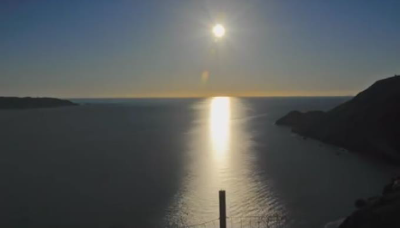58. The Belgium Antarctic Expedition was without Sun from May 17th to July 21st which is not possible on a spherical Earth
“The Royal Belgian Geographical Society in their “Expedition Antarctique Belge,” recorded that during the most severe part of the Antarctic winter, from 71 degrees South latitude onwards, the sun sets on May 17th and is not seen above the horizon again until July 21st! This is completely at odds with the ball-Earth theory, but easily explained by the flat-Earth model. The Midnight Sun is seen from high altitudes in extreme Northern latitudes during Arctic summer because the Sun, at its inner-most cycle, is circling tightly enough around the polar center that it remains visible above the horizon for someone at such a vantage point. Likewise, in extreme Southern latitudes during Arctic summer, the Sun completely disappears from view for over 2 months because there at the Northern Tropic, at the inner-most arc of its boomerang journey, the Sun is circling the Northern center too tightly to be seen from the Southern circumference.”
Dubay's claims that the Sun not being observed for that length of time is incompatible with a spherical Earth, but makes no attempt to explain why. Just another lie from Dubay.
There are multiple web sites that calculate and predict the daylight hours for a particular location, date and time.
One such sight is www.timeanddate.com
Everyone on the Internet, including Mr Dubay and his fellow flat earthers are welcome to try this for their location to check how accurate it is. They will find that it is very accurate, cloud cover permitting.
The key thing to note is that these web sites predict sunrise and sunset based on the Earth being a rotating sphere orbiting the Sun, so any calculation the it produces is by definition completely compatible with "ball-Earth theory".
So let us look at the calculated sunset and sunrise for the Belgium Antarctic Expedition 1897-1899.
The Neumayer Antarctic station is on roughly the same latitude as the Belgian Antarctic Expedition was when it became ice bound, 70.6 degrees south.
In 1897,1898 and 1899 the calculated 24 hour night at this location began on May 21st and lasted until July 23rd.
See:
< Prev 51-60 Next >
Dubay's claims that the Sun not being observed for that length of time is incompatible with a spherical Earth, but makes no attempt to explain why. Just another lie from Dubay.
 |
| Source: https://en.wikipedia.org/wiki/Belgian_Antarctic_Expedition |
There are multiple web sites that calculate and predict the daylight hours for a particular location, date and time.
One such sight is www.timeanddate.com
The key thing to note is that these web sites predict sunrise and sunset based on the Earth being a rotating sphere orbiting the Sun, so any calculation the it produces is by definition completely compatible with "ball-Earth theory".
So let us look at the calculated sunset and sunrise for the Belgium Antarctic Expedition 1897-1899.
The Neumayer Antarctic station is on roughly the same latitude as the Belgian Antarctic Expedition was when it became ice bound, 70.6 degrees south.
In 1897,1898 and 1899 the calculated 24 hour night at this location began on May 21st and lasted until July 23rd.
See:
- https://www.timeanddate.com/sun/antarctica/neumayer-station-iii?month=5&year=1897
- https://www.timeanddate.com/sun/antarctica/neumayer-station-iii?month=6&year=1897
- https://www.timeanddate.com/sun/antarctica/neumayer-station-iii?month=7&year=1897
< Prev 51-60 Next >



Comments
Post a Comment